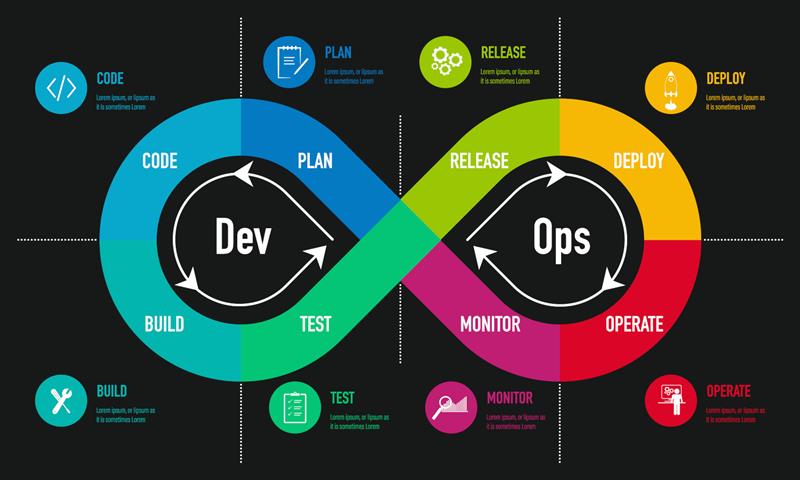What is DevOps? A beginner's Guide

What is DevOps? A beginner’s Guide
In today’s high paced and competitive software world, businesses are required to ship software solutions faster. Software that is not only reliable, but efficient and of high quality. This is a complicated process as it requires different teams to collaborate and work in harmony.
What is DevOPs
DevOps is made up of two words: Development(Dev) and Operations(Ops). DevOps is culture and a set of practices that bridges the gap between the two teams. DevOps is not a tool, a programming language or a product.
In the past, the software development team would build an application and then hand it over to the operations team to deploy and maintain it. This hand over would be filled with problems such as miscommunications, delays and a lot of finger pointing. DevOps was born to solve this problem.
The DevOps movement began around 2007 when software development and IT Operations communities raised concerns of the traditional software development model.
The DevOps life cycle
DevOps is a methodology meant to improve work throughout the software development life cycle. This can be visualized as an infinite loop comprising of the following steps:
1. Plan
Professionals determine gaps and feasibility of the product. Here the team plans what needs to be built by gathering software requirements and setting priorities. Here they design a project plan to optimize business impact and produce the intended result. Tools used: Jira, Azure boards, Trello etc
2. Code/Create
Here developers design and develop the product in short cycles like agile sprints and frequently commit their code in a shared secure repository. Tools used: Git, Github, Gitlab etc
3. Build and Test(Continuous integration)
Every time a team member commits and push code in the shared repository, an automated build and test process kicks in. This process is very essential as it ensure the new code works well in the existing code base and does not introduce bugs. Tools used: Teamcity, Gitlab CI, Jenkins etc
4. Release(Continuous Delivery) and Deployments
Once the code passes all the tests, it’s automatically packaged and prepared for a release. Depending on your configurations, the releases are deployed automatically, into different environments. For example, you can configure the develop branch to be deployed to the staging environment and the production branch to the Production server. Deployments in DevOps should be small, frequent and automated to minimize risk.
5. Operate and Monitor
Once the application has be deployed, it’s actively monitored to ensure it’s healthy, fast and available. Alerts can be set up to notify the team in case of anything unusual such as server crash, high latency, errors spikes etc. Monitoring the performance of the app gives the team valuable feedback which is used to improve the app in the future. Tools used: Prometheus, Graphana, Datadog etc
This creates a continuous feedback loop — plan → build → test → deploy → monitor → improve — over and over again.
Key Principles of DevOps
1. Collaboration - The key principle of DevOps is collaboration. The Development and Operations team coalesce into a functional team that communicates, share feedback and collaborates seamlessly throughout the development and deployment cycle.
2. Automation - Repetitive tasks such testing, building and deployments are automated which gives developers more time to write code and develop new features. Automation is a key feature in the CI/CD pipeline which reduces human errors and increases productivity.
3. Continous Improvement - Continous improvement is about continuously pushing updates that bring value to the customers, while optimizing for speed, cost and ease of delivery.
4. Customer-centric action - DevOps teams use short feedback loops with customers and end users to develop products and services centered around user needs. Teams get immediate visibility into how live users interact with a software system and use that insight to develop further improvements.
5. Create with the end in mind - This principle involves understanding the needs of customers and creating products or services that solve real problems. Teams should not build in ‘silos’ or create software based on assumptions about how consumers will use the software. Rather, DevOps teams should have a holistic understanding of the product from creation to implementation.
Why is DevOps Important?
1. Improved Collaboration and Trust Collaboration is the most important element of a successful DevOps culture. This makes teams more efficient and saves time related to work handoffs and creating code that is designed for the environment where it runs.
2. Speed
Teams that practice DevOps ship products and features faster with higher quality and stability. Continuous delivery allows teams to build, test and deliver software with automated tools.
3. Quality and reliability Practices like continuous integration and continuous delivery ensure changes are functional and safe, which improves the quality of a software product.Monitoring helps teams keep informed of performance in real-time.
4. Security By integrating security into a continuous integration, continuous delivery, and continuous deployment pipeline, DevSecOps is an active, integrated part of the development process. Security is built into the product by integrating active security audits and security testing into agile development and DevOps workflow.
Challenges in DevOps
1. Cultural Resistance Habits are hard to break. Teams entrenched in siloed ways of working might be resistant to overhauling team structures to embrace DevOps practices.
2. Over-reliance on tools - An over-reliance on tools can detract teams from the necessary foundations of DevOps: the team and organization structure. Once a structure is established, the processes and team should come next and the tools should follow.
3. Security Concerns - Security vulnerabilities in the DevOps pipeline make it susceptible to cyber-attacks and can lead to sensitive information being compromised. Mitigate risks by limiting the amount of sensitive information in the code and addressing vulnerable code using Code Analysis tools.
4. Lack of Clear Understanding - : The lack of a clear understanding of DevOps principles and practices can lead to incorrect implementation and ineffective results. This can be solved by regular workshops, seminars and training sessions can enhance DevOps understanding and alignment within the organization. Also, clearly defining DevOps goals and aligning them with business objectives can help clarify the understanding of DevOps.
Conclusion
DevOps is a combination of people, tools and culture. Everyone on a DevOps team must understand the entire value stream — from the idea, to development, to the end user experience. It requires breaking down silos in order to collaborate throughout the product life cycle. Devops isn’t any single person’s job. It’s everyone’s job.
